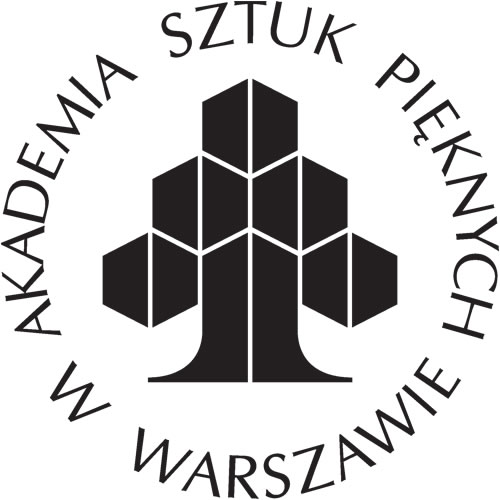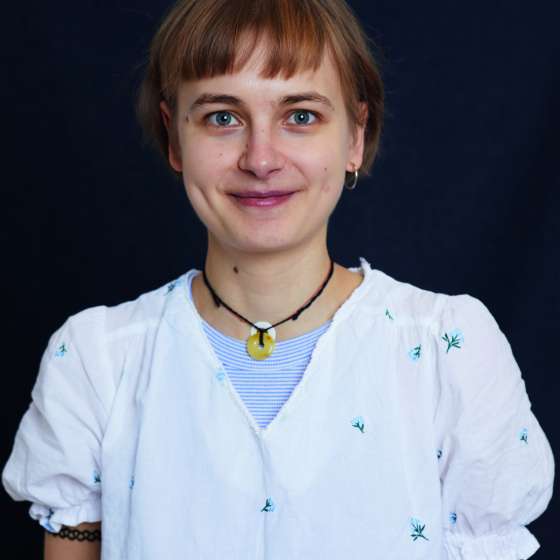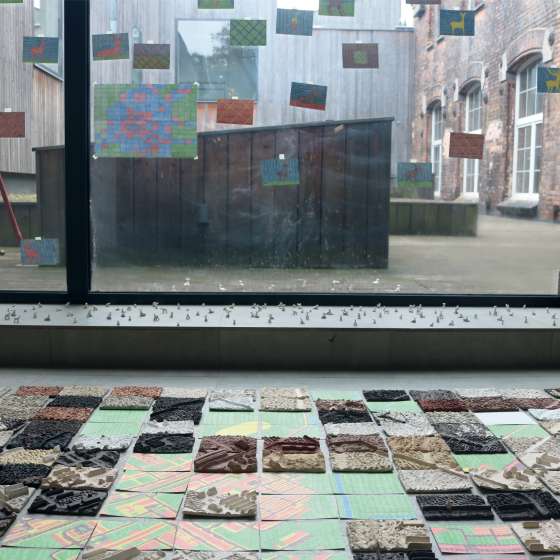Akademia Sztuk Pięknych w Warszawie

Autor: Marta Pruszyńska
Akademia Sztuk Pięknych w Warszawie
Marta Pruszyńska
Kierunek studiów: Rzeźba
Tytuł pracy: „Pozdrowienia z Dachau”
Promotorzy: dr hab. Romuald Woźniak, dra hab. Małgorzata Gurowska
Urodzona w 1991 r. Studia: Wydział Architektury Politechniki Gdańskiej (2011-2017) i Wydział Rzeźby Akademii Sztuk Pięknych w Warszawie (2017-2022). Współtworzy trójmiejski kolektyw muzyczno-towarzysko-artystyczny Gnojki. Architektka, ceramiczka. Tworzy rzeźby i rzeźbki z porcelany i gliny oraz koncepcje architektoniczne elementów natury i ich połączeń z otaczającym światem. W jej pracach istotnym elementem jest skala prac tworzonych w odniesieniu do różnych form życia. Wystawa indywidualna „Stwory”, galeria eskaem, Gdańsk (2022) oraz wystawy zbiorowe m.in. „Upcoming. Wybrane dyplomy Akademii Sztuk Pięknych w Warszawie 2022”.
Born 1991. Studies: Faculty of Architecture of the Gdańsk University of Technology (2011-2017), Faculty of Sculpture of the Academy of Fine Arts in Warsaw (2017-2022). A member of the Tri-City musical-social-artistic collective Gnojki. An architect and a ceramic artist. She makes big and small sculptures of porcelain and clay and architectural concepts of elements of nature and their connections with the surrounding world. An important element of her works is the scale of pieces created with regard to various forms of life. Solo exhibition: "Creatures", eskaem gallery, Gdańsk (2022) and group exhibitions e.g.: "UPCOMING. Selected Degree Pieces of the Academy of Fine Arts in Warsaw 2022".
Pozdrowienia z Dachau
Historia fabryki porcelany Allach w obozie koncentracyjnym Dachau jest początkiem moich poszukiwań, czym jest przedmiot dla człowieka, a kim człowiek dla przedmiotu. Porcelana i śmierć są jak biały i czarny, dobry i zły. W tej historii te przeciwieństwa połączyły się i stworzyły model świata, który wydaje się nierealny. Więźniowie, obdarci z godności i wyrwani z dotychczasowego życia, tworzyli prezenty dla swoich oprawców.
Czytając książkę Edmunda de Waala o historii porcelany Biały szlak. Podróż przez świat porcelany, trafiłam na rozdział o fabryce Allach. Od razu zaczęłam zastanawiać się nad spotkaniem tych dwóch tak skrajnie różnych światów. Zabrałam się za szukanie między nimi podobieństw i połączeń. Wydaje się to absurdalne, ale im dłużej badałam ten temat, tym bardziej oba światy zbliżały się do siebie. Porównania między porcelaną a śmiercią, ceramiką a obozem wydają się niewytłumaczalne, jednak sytuacja ta wydarzyła się naprawdę. Poza miejscem jednym z aspektów łączących te pojęcia jest piec – ceramiczny i gazowy. W każdym z nich temperatura wypału jest podobna. Pierwszy służył do wypalania porcelanowych figurek jeleni, a w drugim spalano zwłoki więźniów. Tworzy to obraz rzeczywistości, której wolelibyśmy nie widzieć. Niezwykle niewygodnej, a wręcz bolesnej. Dlatego nie zastanawiamy się nad tym, nie zbliżamy tak skrajnie różnych problemów istnienia.
The history of the Allach porcelain factory in the Dachau concentration camp is the beginning of my search for what the object is for the human being and what the human being is for the object. Porcelain and death are like black and white – good and evil. In this story, these opposites have merged and created a model of the world that seems unreal. Deprived of dignity and torn out of their current life, prisoners created gifts for their tormentors.
When reading Edmund de Waal’s book on the history of porcelain The White Road, I came across the chapter about the Allach factory. I immediately started thinking about an encounter of these two extremely different worlds. I got around to looking for similarities and connections between them. It may seem absurd, but the longer I examined this topic, the closer both worlds became towards each other. Comparisons between porcelain and death and between ceramics and the camp seem inexplicable, but this situation did really happen. Apart from the place, one of the aspects connecting these terms is the ceramic stove and the gas stove. The temperature of burning is similar in each of them. The former was used for burning porcelain deer figures, and the latter for burning prisoners’ corpses. This creates a picture of the reality that we would prefer not to see. An extremely uncomfortable, almost painful reality. Therefore, we do not wonder about that and do not bring such entirely different problems of existence together.







